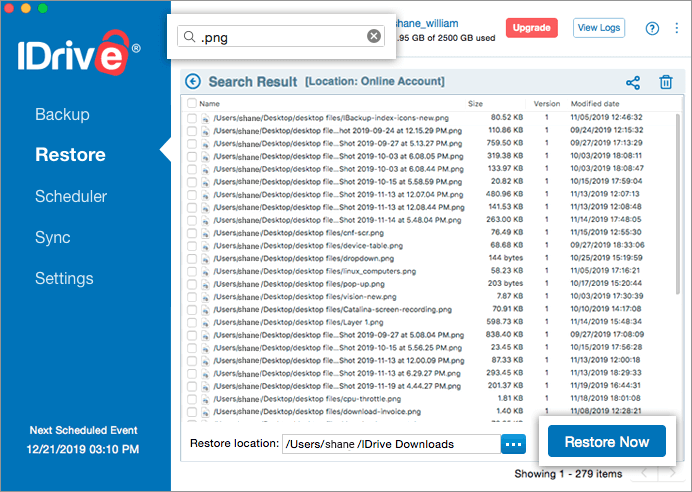Can I delete 'installer packages'? By klonestar May 26, 2005 12:04PM PDT After downloading and installing a program can the 'installer package' then be deleted to clean up the HD space? Better keep track of extra dependency packages installed while you are installing one. The following extra packages will be installed: libgssglue1 libnfsidmap2 libtirpc1 nfs-common rpcbind If you remove original package only, the dependency package may remain. So you have to manually remove each one using. Apt-get purge packagename.
Last updated on July 4th, 2019

The default apps that are installed in every newly created user, on a Windows 10, 8.1 & 8 based computer, are called provisioned (or 'pre-installed') apps and all the apps that are downloaded and installed from Windows Store are called installed apps.
When you remove an app (provisioned or installed), in fact you only un-register the app (you make the app unavailable) to the user (s).
That means that all the installation package files (provisioned or downloaded) that are used to install the app(s) still remain on your computer even after you uninstall the app.
The installation packages are stored at this location on your computer:
- C:Program FilesWindowsApps *
* Note: The 'WindowsApps' folder is hidden and has restrictions from accessing it. If you want to view its contents, read this article: How to get access to C:Program FilesWindowsApps folder in Windows 10 & Windows 8.
In this tutorial I 'll show you how to completely clean the provisioned packages and files, after you uninstall an app, in order to keep your computer clean from useless files.
How to Delete the Installation Files of the Default built-in Apps.
Attention: Keep in mind, that if you delete the installation files of the default built in apps from your system, then the preinstalled default apps will be unavailable to every user on your system and the only method to reinstall the default apps (on the future), is to download and install them from Windows Store.
Part 1.To delete a particular provisioned package.
Part 2. To delete all provisioned packages.
Part 1. How to remove a particular provisioned package Windows 10,8.1, & 8 OS.
1. First uninstall the desired app from all existed users on your system, by following the instructions on this tutorial. How to remove – uninstall – particular Apps in Windows 10 / 8.

2. After uninstall, give the following command to get a list of all available provisioned on your system.
Get-AppXProvisionedPackage -Online | Select PackageName
3. Then proceed to delete the desired provisioned package by giving this command *:
- Remove-AppXProvisionedPackage -Online -PackageName <PackageName>
* Note: Replace the <PackageName> value, with the name of the provisioned package name, you want to uninstall, from the list you get, after executing the above command.
Part 2.How to remove All Provisioned packages in Windows 10,8.1, & 8 OS.
1. First uninstall all default built-in (provisioned) apps from all users on your system by following the instructions on this tutorial: How to remove all the Default Built-in (Preinstalled–Provisioned) apps in Windows 10, 8.
2. After uninstall, proceed to remove and delete all provisioned package files from your system, by giving the following command:
- Get-AppXProvisionedPackage -online | Remove-AppxProvisionedPackage –online
That's it!
Full household PC Protection - Protect up to 3 PCs with NEW Malwarebytes Anti-Malware Premium!
Question: I would like to know how to install, uninstall, verify deb packages on Debian. Can you explain me with an example?
Answer: Use dpkg to install and remove a deb package as explained below.
On Debian, dpkg (Debian package system) allows you to install and remove the software packages. dpkg is the simplest way to install and uninstall a package.
Debian now supplies a tool named Apt (for “A Package Tool”) and aptitude to help the administrators to add or remove software more easily. Refer to our earlier Manage packages using apt-get for more details.
Installing a Deb Using dpkg -i
The following example installs the Debian package for tcl tool.
You can verify the installation of package using dpkg -l packagename as shown below.
The above command shows that tcl package is installed properly. ‘ii’ specifies status ‘installed ok installed’.
Uninstalling a Deb using dpkg -r
dpkg with -r option removes the installed package.
Now list the package and check the status.
rc stands for ‘removed ok config-files’. The remove action didn’t purge the configuration files. The status of each installed package will be available in /var/lib/dpkg/status. Status of tcl8.4 package looks like,
The following command is used to purge the package completely.
So the package is completely removed, and the status in the /var/lib/dpkg/status is given below.
If you enjoyed this article, you might also like..
Can I Delete Pkg Files After Installation Ps3
Can You Delete Pkg Files After Installing On Iphone
Next post: Geeky Wrap-up: Week of Jun 14, 2010
Can You Delete Pkg Files After Installing Windows 10
Previous post: Sun Solaris: How to Install or Remove Sparc Packages Using pkgadd and pkgrm